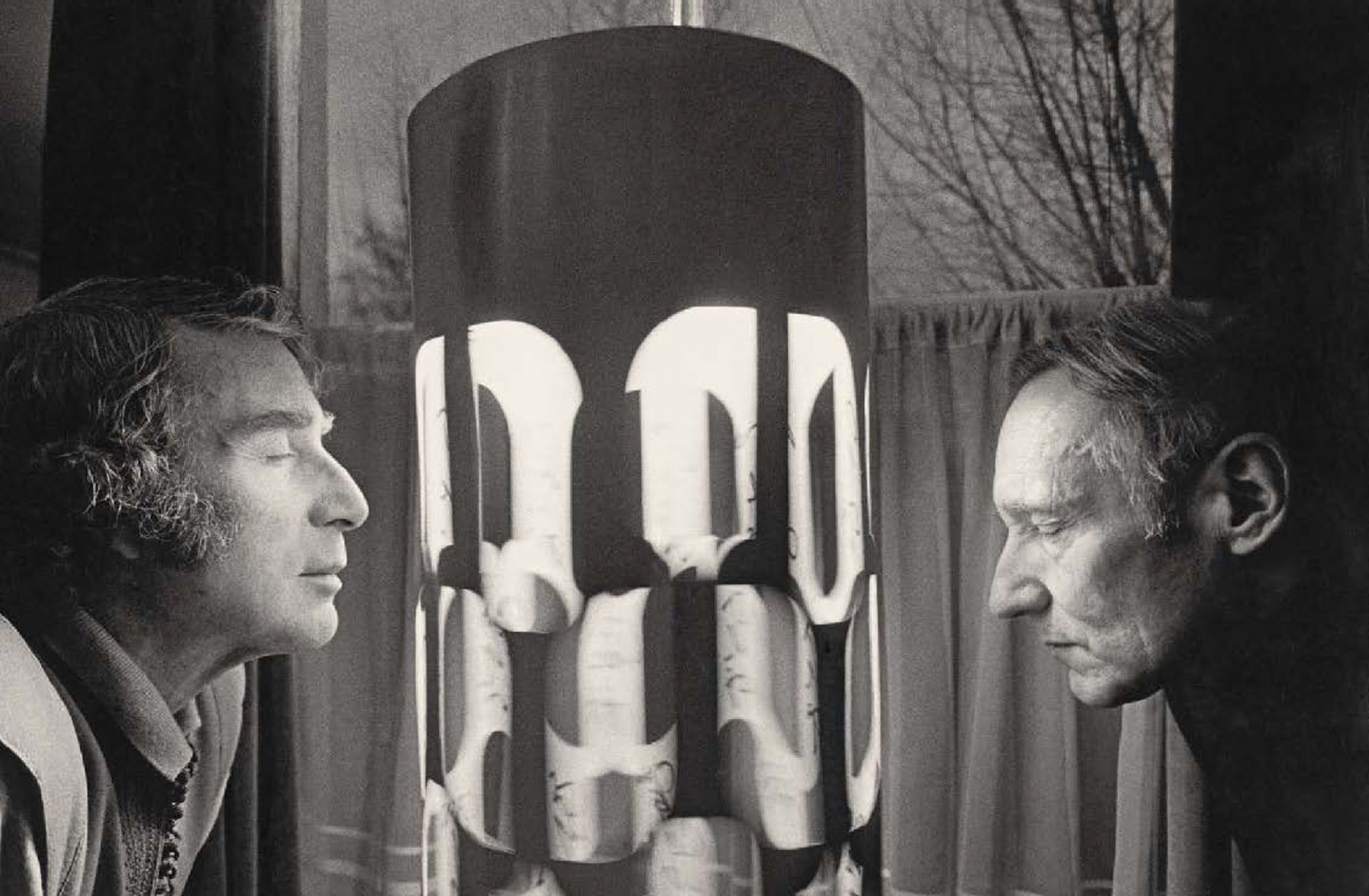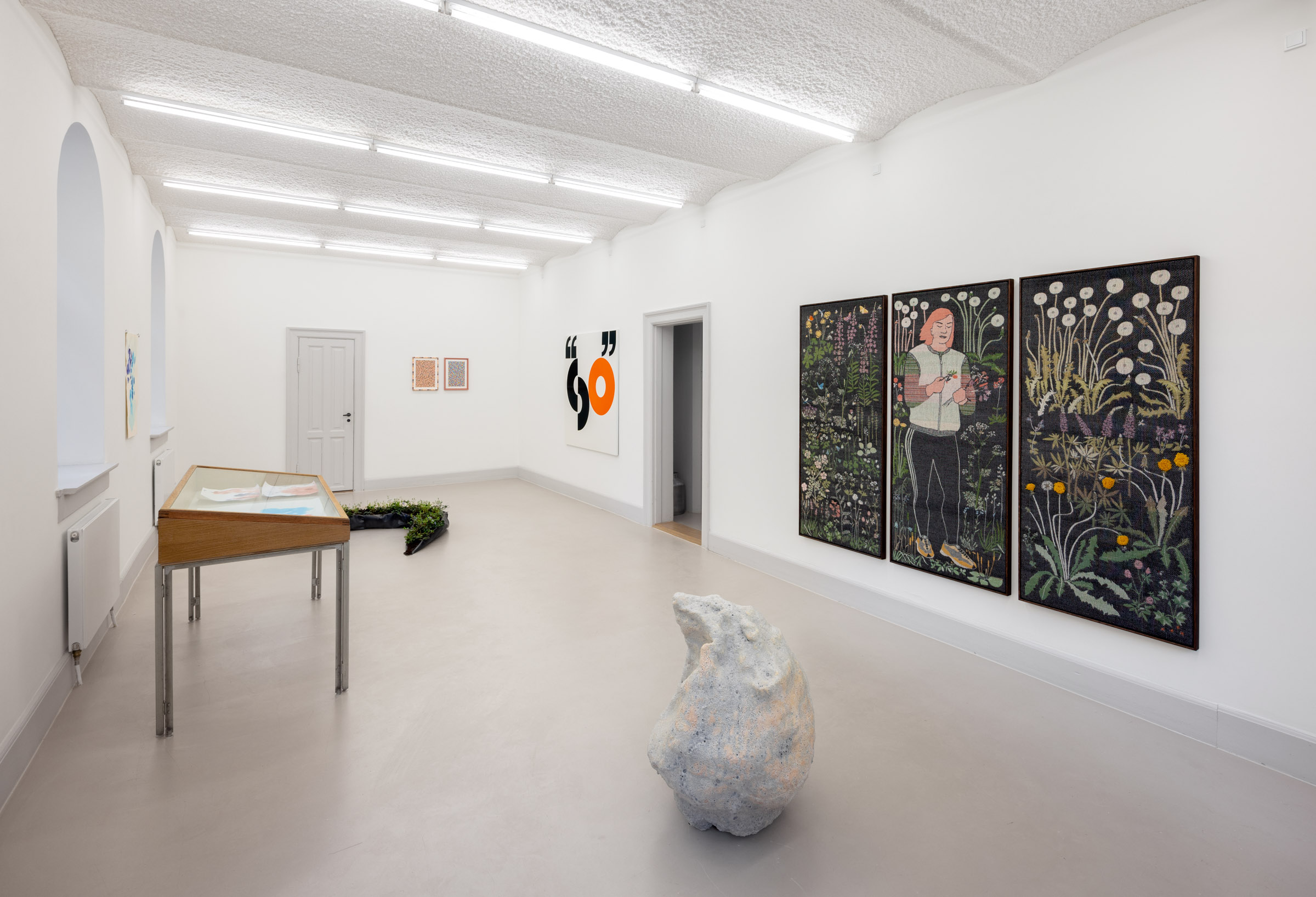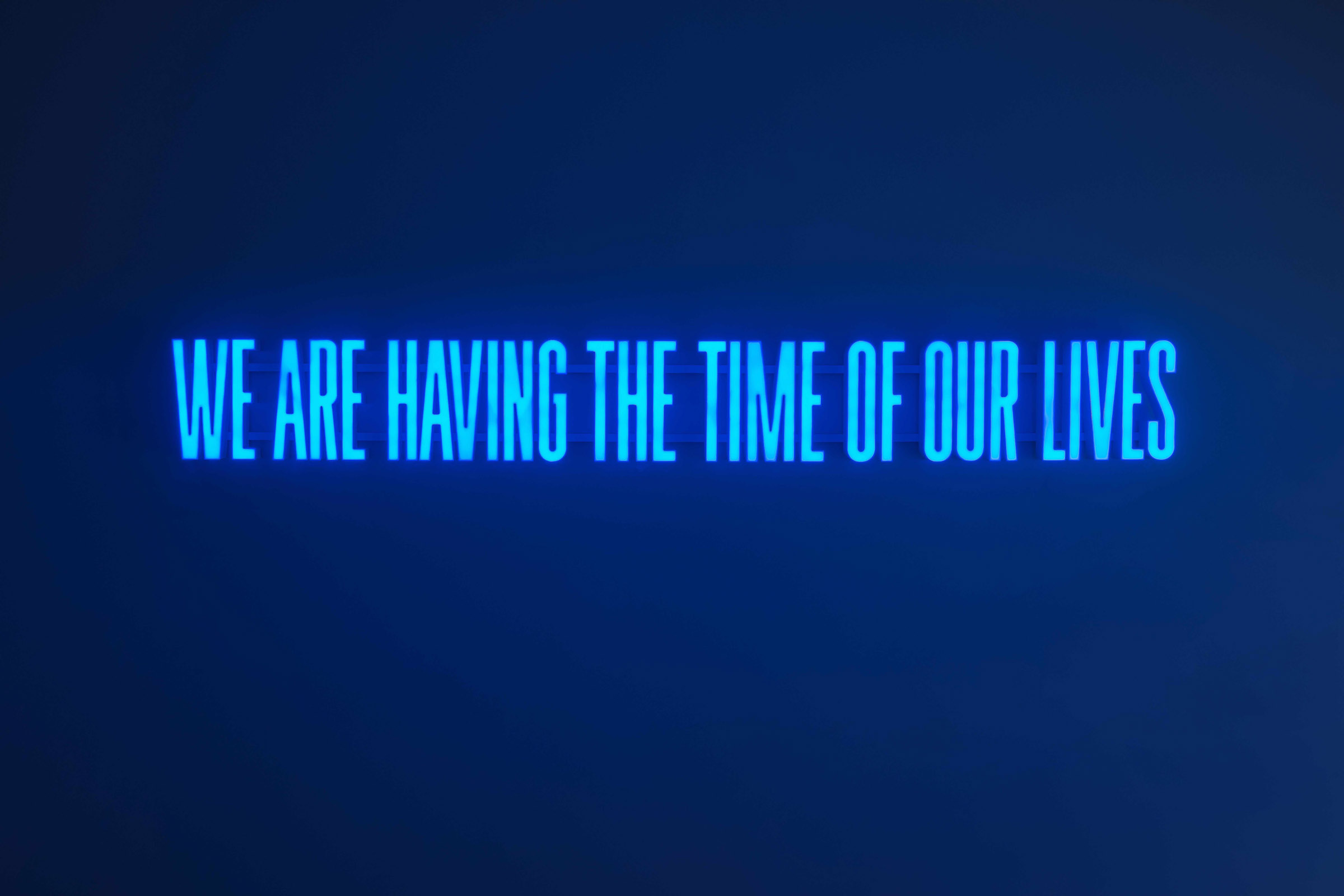The Dream Goes On

Brion Gysin led an eventful life. Among other projects, he explored the idea that with the help of light people with eyes closed could be put into a trance. “Dreamachines” were to develop this idea on an artistic level. Hold on to your seats...
Driving once down a tree-lined avenue you might have been blinded by the salvos of light shooting rhythmically through the branches. Leaning back and with your eyes closed, you might have submitted to the insistent rays and perhaps started dreaming. Brion Gysin (1916 – 1986) considered such day dreams the key inspiration for his surrealistic paintings – quite in line with the Paris Surrealists. He had his Eureka moment while travelling through the tree-lined roads in the South of France. But only in 1960 did he transform this experience into the “dreamachine”. To this day, this light device circulates ghost-like through the web pages of creative imitators who can download the patent of 18 July 1961, as well a construction manual1. But it appears that hardly anyone knows that in its chequered history, Brion Gysin’s legendary “dreamachine” experienced a historic postscript and second high point at the Galerie Miklos von Bartha in Basel. “Dreamachine” and “Gysin, who?” you might ask. The lack of knowledge is justified, because this work has never quite achieved adequate recognition in the kinetic art movement. The “dreamachine” is a flickering light device, which sends light out from an interior light bulb through stylised leaf-shaped slits; the device, together with a cylindrical hood, turns around on a gramophone turntable producing 13 light flickers (so-called alpha waves) per second. Its creator, Brion Gysin, a friend and partner of the more famous author William S. Burroughs, is primarily known in literary circles, among friends of Moroccan music, in alternative circles of occult-magical installations, in jazz bands and in the internet. Why then should someone in art history have a lasting interest in Gysin and his light device? For the good reason that not everything that hovers on the margins of mainstream art is therefore uninteresting; on the contrary: the “dreamachine” may very well stand as a prime example for the contemporary and consistently topical cross-over of art into other areas.
Gysin’s life was just as multifaceted2. He could have been a contemporary of one of those Renaissance experimenters (as it were, his heavy features resembled those of Giovanni Arnolfini in Jan van Eyck’s famous wedding portrait). Gysin, English by birth, had first lived in Switzerland, then grew up in America, where he had moved with his widowed mother, and subsequently studied in Paris and Switzerland. He tried his hand as an auto-didactical painter of surrealist works, although André Breton had his paintings removed from a Surrealist group show in 1935. But even without the approval of Breton, Gysin succeeded in exhibiting several times. In the 1950s, he was drawn to Tangier, where in a tiny bar named “1001” not far from the royal palace, he put on Moroccan folk music, played jazz, took artistic photographs of his friends, continued to draw, painted and wrote novels. In his bar, he met more famous fellow artists, William Burroughs among them, a group of “outlaws” who – following the example of Henri Michaux, Timothy Leary and Aldous Huxley – sought the inspiration for creative work in drugs. Gysin’s experiments with “cut-ups”, as he called the collages put together from newspaper articles and visual material, decisively inspired Burroughs to his (deemed scandalous) novels consisting of montages of quotes. Words were cut out like pictures and rearranged to provide, “lightning-like”, new meaning, as in Burroughs’ novels “The Naked Lunch” (1959) and “The Ticket That Exploded” (1962).
TEAMWORK. After losing his bar in Tangier and being poor, Gysin went to Paris where he lived in the “Beat Hotel” (real name Hotel Git-le-Coeur)3. By chance, he met Burroughs again – a crucial meeting that resulted in a number of joint projects. Both glued and mounted, for instance, more than a hundred collages under the title “The Third Mind” (1965 – 1970), works that today can be found in museum collections in London and Los Angeles. Together, they were interested in “exploding” creative material – whether in exterior, concrete reality or inside the individual in the form of mental processes like hallucinations. They meant to expand the “spiritual in art” with autonomous consciousness processes, as if a third mind were at work. While Burroughs repeatedly and much too precariously turned to drugs for stimulation, Gysin tried, with his eyes closed, to be transported by actual light stimulation into trance-like states. Remembering his early seminal experience with light, he was looking for a way to transpose it. Grey Walter’s book “The Living Brain” about autonomous brain activity under flickering light stimuli – caused by either direct light or by flickering films – provided important stimulation for the two artists4. Vital help, however, Gysin was to receive from Burroughs’s young friend Ian Sommerville, an Englishman, who had followed them around for years. Sommerville and Gysin exchanged letters about experiments on apparatuses as Sommerville, a programmer and digital technician, had constructed a cylindrical “flicker machine” and now thought it may be suited to produce hallucinatory perceptions. Gysin became interested and built something similar, which he then perfected and called – true surrealist of the old school that he was – a “dreamachine”5. Although the cylinder only turned around itself on a motor-driven turntable with a light bulb in the centre, the light shot past the viewer through longish leaf-shaped slits arranged in a brickwork pattern with every two slits positioned to mirror each other. The light kept hitting the eyes rhythmically in choppy intervals and, of course, also the walls of the room and any objects therein. Memories of experimental colour organs popular in the 19th century may have surfaced at the time, as well as of kinetic experiments with light at the Bauhaus and of Laszlo Moholy-Nagy’s “light space modulator” (1922/1930), although the original of this no longer existed in 1960/61, also of Otto Piene’s “light garden” and his “light ballet” (1959) and of kinetic art in general as in the exhibition “Le movement” (1955) put on in Paris by the gallerist Denise René. Gysin did not comment on the exhibit. However, he and the poignantly loyal Burroughs6 hoped that the dreamachine would not only meet scientific requirements for research into neurological and psychological brain functions – here they firmly believed in a breakthrough – but that it also would be judged as a kinetic work of art that could be mass-produced.7 In vain. Alfred Barr, founder and director of the Museum of Modern Art in New York told Gysin that kinetic art had passed its high point and that Pop Art was now in vogue. He claimed this although the international art movement of Nouvelle Tendance had only recently been founded. Did Barr mean that one swallow does not make a summer? The rules applied to art at the time were different from what Gysin had in mind. Furthermore Gysin with his surrealistic tendencies was unique in the kinetic movement, which for someone like Barr could count against him since kinetic art had moved away from surrealism. To be unique is nevertheless a positive thing. Gysin was further disappointed by Helena Rubinstein, because she considered a specially for an alcove in her sitting room enlarged dreamachine only a loan and soon returned it, while Gysin had hoped for some publicity as a result of the commission. He also didn’t like that her secretary had stuck a mummified cat from ancient Egypt into his machine. Scientists who were approached showed no interest. Only later did research get underway to find out what effects and influence mechanical phenomena could have on biological- neurological, psychological and ultimately philosophical aspects. It is likely that today, one would assess Gysin’s stroboscopic light object differently, perhaps as a cross-over art work spanning surrealism and kinetics, science, literature and film8. Meanwhile, the constructivist artist and Dadaist Hans Richter, who, starting in 1919, had frequently experimented with abstract film, had written an important essay that was published in America in 19529. According to Richter, film is an orchestration of movement in visual rhythms under changing light, working with the subdivision of space and moving objects and capable of developing a lyrical, yes, even a magical quality due to its luminous power and transparency.
ENTHUSSIASM. Is it possible that Gysin, a highly educated man, knew this essay? In any case Burroughs had been enthusiastic about film from early on and knew several directors. As it may be, Burroughs, Gysin and Sommerville met the film maker Anthony Balch. Together they produced in 1961/1962 several very short experimental silent films, often in black and white, mostly using the method of cut-up montage and featuring the dreamachine in not unessential roles10. Burroughs called them “light-maskers”11. One film repeatedly shows a doctor’s office (Gysin in a white coat floats by from time to time) in which a boy, unclothed from the waist up, seems to have fallen into a trance.12 Burroughs opens a type of diaper on the boy. The lining shows no imprint of a penis. A cut in the montage turns to the moving dreamachine. The meaning of this sequence may be made comprehensible by how Gysin invoked the myth of Isis and Osiris in an interview: “Eyes of Isis float by”13. Could it be that Balch’s film suggests a daydream about the dead Osiris, who in Egyptian mythology represents the nocturnal side of life, because his sister Isis could not recover his missing penis from the Nile? In any case, the film dealt with a surrealistic dream sequence. As a voyeur of an episode focused on night and death, the viewer would directly afterwards be directed – with the help of the flickering dreamachine – towards his own inner visions. Another film shows in the slits of the dreamachine the built structures of an unfinished architecture which seems to merge with the leaf-like openings, thereby imbuing the film with a many-faceted voluminousness. With the camera standing still, the scene or the light object moved instead in front of the camera and also from right to left, so that the “trance” that the boy acts out on the chair ideally could be passed on to the viewer14. Attempts like this to integrate the viewer were a recurrent goal in art at the time.
THE END? After these films, the dreamachine had faded from view. Not before 1976 was it resurrected in Basel, a fact that surprisingly finds no mention in the relevant literature or on the internet15. That year, Sommerville died in England. In the 70s, the art dealer Carl Laszlo had invited Gysin on several occasions to Basel. Here, he met the young gallerist Miklos von Bartha, who together with his wife Margareta represented constructive and kinetic art in Basel. Soon, Gysin inspired von Bartha with the idea to finally construct a fully functioning dreamachine. The technically expert gallerist built four machines, all still in existence today. Gysin kept one and then sold it to the Centre George Pompidou in Paris, two went to Carl Laszlo, and one remained at the Galerie von Bartha. This last one had not been completely finished at the time, so was not the one that was introduced as a newly constructed dreamachine in the Galerie von Bartha on 7 June 1979 in conjunction with a talk given by William Burroughs. All three machines remaining in Basel were restored in 2008/200916. The construction as such was intelligible: In 1976, von Bartha had placed inside the outer plexiglass cylinder of 30 cm in diameter an inner cylinder of 23.5 cm in diameter and made it turn with the help of a turntable installed at the bottom. Gysin himself supplied a two-dimensional layout, on which the pattern of the slits to be punched out was painted together with single brushstrokes of colour and a specially invented calligraphy over the basic pattern. This layout was mounted onto the inner cylinder that encloses the light bulb. Similar patterns of slits and brushstrokes of colour testify to the stylistic transition phase around 1961. At that time, a tendency in art started to push back the art of informal individual brushstrokes, which were felt to be too subjective or ingenious, and instead proceed with repeated pictorial instead of individual elements in non-hierarchical structures. Gysin apparently tried to provide an experience of both styles, merging them symbiotically with stroboscopic light. About the meaning of the magic effects of his images, Gysin has left some eccentric statements17. Finally in his novel “The Last Museum”, written shortly before his death, he invented – taking into account the Tibetan “Book of the Dead” and the pyramids – a sort of eternal death cult museum as a timeless space in which his dreamachine would find a place where in its entirety it would be a cell for laying out the dead18. In the preface, Burroughs wrote how Gysin had actually died. Like a knight! He says that he had always respected him as someone who was incapable of any kind of fakery.
- Written by Gysin in Februar 1962 and published in the 2nd edition of Literary Journal Olympia, the manual for the construction of the dreamachine was posted on the internet on 11th February 2008. www.interpc.fr/mapage/westernlands/dreamchine.html
- Compare the autobiography with reference to the dreamachine. Gysin, Brion: Légendes de Brion Gysin. Traduit par Brice Mathieussent. Paris 1983 o.S.
- Compare Chapman, Harold: The Beat Hotel. Nostalgia by William S. Burroughs and Brion Gysin. Paris 1984.
- Grey Walter, W.: The Living Brain. New York, London 1953 (Pinguin Books) (New ed. Mitcham, Victoria 1963 p. 43, 65, 80, 90, 200/201ff.) Marshall McLuhan and R.L. Gregory wrote about similar effects of the media later.
- Compare Gysin, Brion: Dreamachine. In: Weiss, Jason (ed.): Back in No Time. The Brion Gysin Reader. Middletown, CT 2001 113/114; Geiger, John: Chapel of Extreme Experience, a Short History of Stroboscopic Light and the Dreamachine. New York 2003 S. 62; Ausst.-Kat. Teicher, Hendel (ed.): Cut-Outs and Cut-Ups. Hans Christian Andersen und William Seward Burroughs. Irish Museum of Modern Art. Dublin 2008 p. 14/15.
- According to a statement by Carl Laszlo, Basel. Still: Burroughs did not write an essay about the dreamachine but about the kinetic work by Takis. In: Signals, Vol. 1, No. 304, London, Oct. – Nov. 1964
- In New York, Gysin tried to interest a literary agent in production of the machine. The agent declined on the grounds of rumours that the light flicker could cause viewers to become epileptics. In: Morgan, New York 1988 p. 411, 453; It is amusing that in the construction manual there is a warning about a “photosensitive effect” on epilepsy. This effect was never confirmed scientifically. But Gysin himself believed in this danger and mentions it in his autobiography (see 4 above)
- Such types of symbiosis were already predicted by the Futurists around 1910 and by Kandinsky in 1912 and extolled again in the 30s. See: Wais, R.: Symbiose der Künste. Forschungsgrundlagen zur Wechselbeziehung zwischen Dich- tung, Bild und Tonkunst. Stuttgart 1936. Gysin grew up in Switzerland and knew German.
- Richter, Hans: Film as an Original Art. In: College Art Journal, New York 1952 (auf Deutsch: Schlemmer, Gottfried (Hrsg.): Avantgardistischer Film 1951–1971: Theorie. München 1973 p. 16–18
- Anthony Balch: Towers Open Fire, 1963 (Coll. Centre Georges Pompidou), among others: films with the dreamachine (on the internet).
- Quote in: Ravage Nr. 283, April 1999.
- The actor is Mickey Portmann, Burroughs’s seventeen-year-old Adlatus, with Sommerville one of Burroughs triumvi-
rate at the time.
- Vale, V. (ed.): “RE search” No. 4/5 A Special Book Issue William S. Burroughs, Brion Gysin and Throbbing Gristle.
San Francisco 2007 p. 53, Gysin in conversation with Jon Savage.
- The films can be seen online.
- Only in: Vale (ed.), San Francisco 2007, on page 5, there is a photo of Burroughs and Gysin taking a walk in Basel in
1979. The picture was taken after Miklos von Bartha’s new construction of the dreamachine in 1976.
- See the restoration report by Philia Heydrich.
- Quoted in: Headpress 25 (Journal of Sex Religion Death) pp. 21
- Gysin, Brion: The Last Museum. New York 1986, p. 176/177




